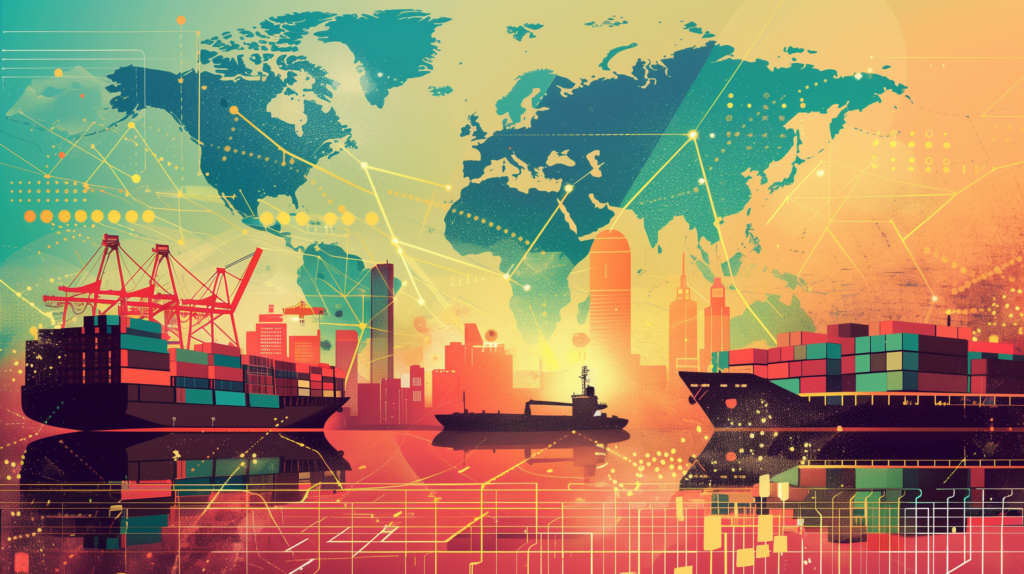Strategies for Building Resilient Supply Chains to Navigate Unexpected Disruptions
The Spotlight on Supply Chains In recent years, the global supply chain has faced multiple unprecedented disruptions. Events like the Suez Canal blockage and the COVID-19 pandemic have fundamentally altered...
Lessons Learned and Future Strategies
On July 15, 2024
The Spotlight on Supply Chains
In recent years, the global supply chain has faced multiple unprecedented disruptions. Events like the Suez Canal blockage and the COVID-19 pandemic have fundamentally altered our perception of global logistics. Even in 2024, their impacts are still vividly remembered.
These disruptions highlighted the critical importance of supply chains. Terms like shortages, disruptions, and workforce challenges became part of everyday conversations. Companies were compelled to scrutinize and adapt their supply chain strategies, asking themselves how best to pivot in response to ongoing challenges.

The Enduring Nature of Disruptions
Two years post-pandemic, some companies have successfully adapted, while others continue to face challenges. One thing remains clear: disruptions are here to stay. Whether it’s a global pandemic or regional events like wildfires, hurricanes, or typhoons, supply chains must be resilient and adaptive to varying forms of disruption.
Preparedness for Future Disruptions
The pandemic has made us more prepared, but future disruptions may take different forms, such as geopolitical issues. These unforeseen events can have significant impacts, emphasizing the need for continuous vigilance and adaptability in supply chain management.
Never miss a story. Stay updated about Rebus news as it happens.
Leadership and Vision
Effective supply chain resilience starts with top-down vision. It’s vital for leadership to recognize that traditional business methods may not suffice in the face of new challenges. Once this vision is set, middle managers and operational teams can implement strategies to enhance resiliency—whether through diversifying suppliers, establishing redundant facilities, or expanding supply chain capacities.
For instance, a company with a single facility in a hurricane-prone area like Florida should consider adding another facility to mitigate risk and increase capacity. Continual adjustments are necessary as today’s challenges may evolve over time.
Large vs. Small and Mid-size Companies
While large companies might find it easier to allocate resources for additional facilities, smaller and mid-size companies also need to adopt resilient strategies. Regardless of size, all companies should evaluate their current assets and seek innovative ways to enhance their supply chain resilience, even if larger budgets aren’t available. Often, mid-size and smaller enterprises can leverage their existing assets more flexibly than larger counterparts burdened with bureaucratic red tape.
Key Assets: Physical and Human Capital
Every company, regardless of size, possesses two vital assets:
- Physical infrastructure (including digital infrastructure)
- Human capital
While physical assets are important, human capital is paramount. Once a vision is set, companies must focus on their workforce to enhance effectiveness. Smaller companies often excel here due to their close-knit culture, allowing employees to be deeply aligned with the company’s vision for supply chain resiliency.
The Role of Supply Chain Relationships
Understanding risks and vulnerabilities is crucial. Companies should assess whether their COVID-exposed vulnerabilities still exist and address them promptly. Successful companies often treat vendors as partners, fostering relationships that can provide critical support during challenges.
When unforeseen disruptions occur, strong internal relationships and dedicated middle managers who believe in the vision can drive collaborative problem-solving.
Agility: The Advantage of Smaller Companies
Smaller and mid-size companies often have the agility to quickly adapt to new challenges. During the pandemic, many local businesses demonstrated flexibility like restaurants implementing creative solutions such as drive-up delivery. These adaptive measures helped them emerge stronger.
Regardless of company size, having visibility into your network—knowing where products and people are and identifying bottlenecks—is essential. Collaborating with technology partners to harness this information enables quick reaction and prevention of disruptions.
Utilizing AI and ML for Supply Chain Resiliency
AI can automate certain decisions, freeing managers from routine tasks. While AI alone isn’t yet capable of making all decisions, its integration with human expertise offers significant advantages. For example, store managers can use AI to automate straightforward tasks, allowing them to focus on more complex issues.
The combination of AI’s data processing speed and human decision-making creates a powerful synergy. As AI continues to evolve, its role in enhancing supply chain resiliency will grow, offering promising possibilities for the future.
How to build a resilient supply chain:
- Adopt a Proactive Leadership Vision
- Leverage Physical and Human Capital
- Foster Strong Vendor Partnerships
- Utilize Agility for Quick Adaptation
- Combine AI with Human Expertise
Conclusion
By learning from past disruptions and maintaining a proactive approach, companies can better prepare for future supply chain challenges. How is your company strategizing to ensure resilience and adaptability?
This blog post was adapted from the webinar, “Building Resilient Supply Chains for the Next Disruption.” You can watch the webinar replay here.








